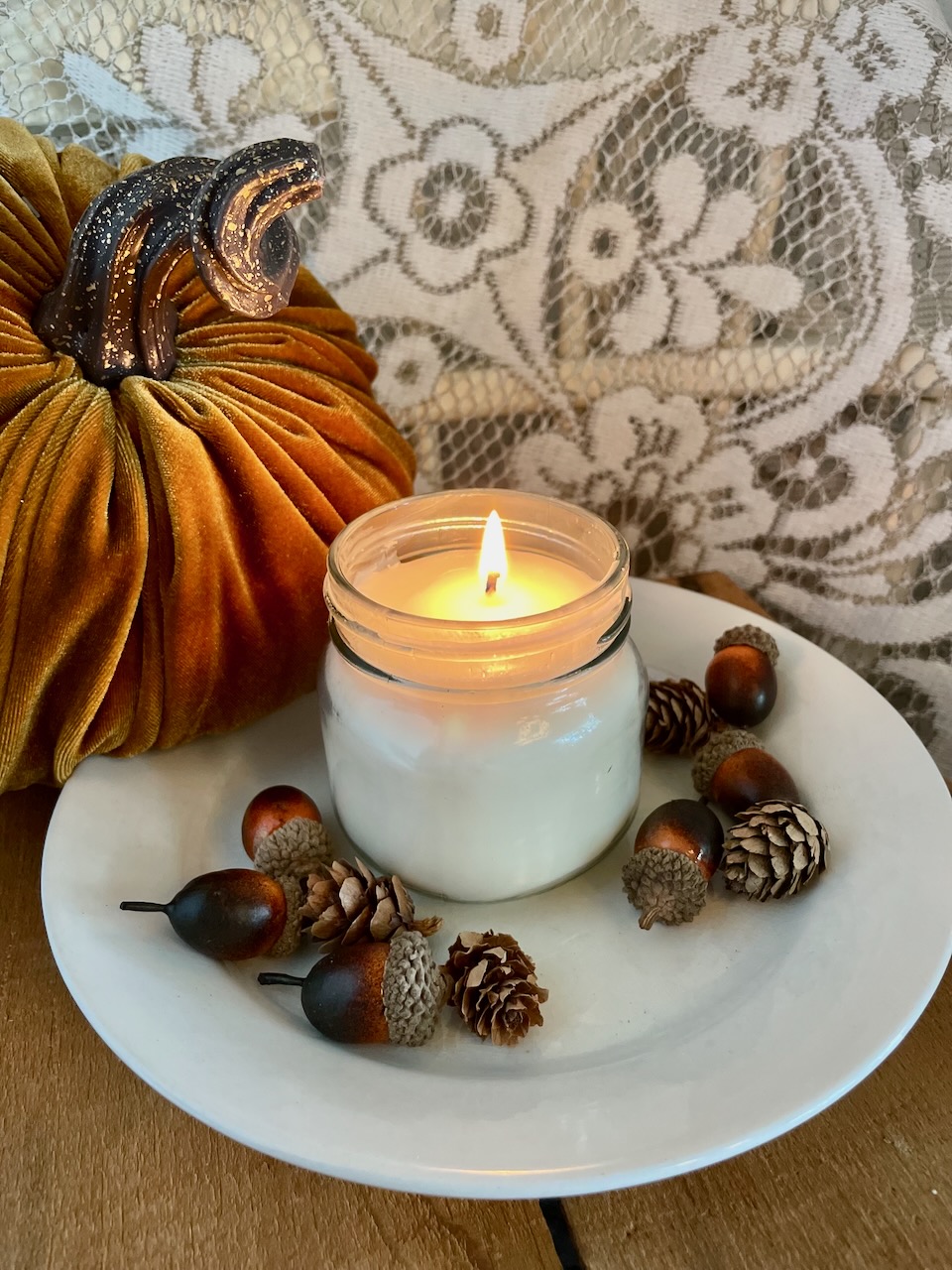Last Updated on December 5, 2025 by Rachel
Learn, step by step, how to create your own custom farmhouse decor! This beginner’s guide to DIY reclaimed wood signs gives you all the needed tips.
There’s just something extra special about creating homemade decor and displaying it for all to see. I’ve been making these wooden signs for over a year now and wanted to share my knowledge of a really easy way to do so! These old wood decor pieces are not only fun to create but I also find such joy in repurposing wood that has had such a journey with years and years of wear. This worn wood is now given a new purpose! For chic custom farmhouse decor, follow along with your beginner’s guide to DIY reclaimed wood signs.
Materials Needed for DIY Wood Signs
- reclaimed wood
- a tape measure
- pencil and eraser
- hammer
- philips screwdriver
- electric sander
- 100 grit sandpaper
- a mitre saw
- DecoArt Americana white paint
- foam brushes
- DecoArt Americana colored paint
- letter stencils
- foam dobbers
- small craft paintbrushes
- paper plate
- an old sheet or towel
- sawtooth hooks
Custom Farmhouse Decor: Your Beginner’s Guide to DIY Reclaimed Wood Signs- Step by Step Tutorial
1. Find Some Old Wood.
Antique stores, lumber yards, and Facebook Marketplace, or your parent’s old fence are all places to locate wood in your area. Examples of reclaimed wood include old wooden fencing, wood from an old house, old pallets, barn wood, etc… As long as the wood is somewhat old so that it looks weathered you will be good to go.
2. Cut Wood to Length if Needed.
The length of the board depends on what you would like the sign to say and if you will be putting a picture of some kind on it. Sometimes you won’t need to do any cutting if the board is already at a desired length. However, if a board is too long for the lettering, you will need to do some measuring first to see where the lettering will start and stop and then cut it to length. Tip: I use a mitre saw for this.
3. Sand the Wood.
Using a sander, sand the whole board down including the sides and the back. Having an electric sander makes this job a lot easier. Wet a paper towel or an old rag just slightly and wipe the wood down to remove excess dust after sanding.
4. Whitewash It!
I suggest putting an old sheet or towel down under the wood so you don’t get any paint on the surface you are using. Pick the side of the board that you would like to use. Typically the side that has more character such as knots in the wood make for really pretty signs.To whitewash, put some white paint on a paper plate and then dip the top of the 2-inch foam brush into the paint. Start at one end of the board and just go back and forth on all sides (except the back) until you get the desired look that you are after. Go light on the paint as we’re going for a weathered look here. Let that paint dry completely. Tip: If you apply too much paint, just let it dry and sand it down a bit.
5. Tracing the Letters.
You can either choose to use letter stencils, which is what I did for quite a long time when I first started out, or you can hand letter on your own. Either way will create a beautiful sign.
STENCIL OPTION:
There are many different types of sizes and fonts available online or in stores. Lay the letters out on the wood first to get the spacing correct. For example, if you are lettering the word ‘FARMHOUSE’, lay out all the stencil letters and then step back and look to make sure it is straight and that you have a good amount of space on either side of the word itself. If you are planning on putting some type of design next to your word, you will need to factor that in and move the letters to the left or right so you have space for that.
Then, grab a foam dabber, dab it a few times into your paint color of choice, and then go right into stenciling the letters. Go slow with this process so that you don’t get any paint bleeding under the stencil. Sometimes, after pulling the stencils off, you might notice that some of the paint bled out underneath the stencil, but that’s okay! Just go back with a skinny paintbrush with the same color paint and finesse the edges with that.
HANDLETTERING OPTION:
This option is fairly new to me so I pull inspiration from signs on Pinterest. If there is a particular sign that has a pretty font, I will keep that on the computer screen for reference while drawing the letters. Now, for hand lettering, there is an extra step involved of measuring so that the spacing is correct. To do this, measure the whole board from end to end and then divide that by the number of letters in the word you are lettering. For example, if the word you are lettering is ‘welcome’ and the board is 53 inches long, divide 53 by 7 which is approximately 7 inches. 7 inches will be the amount of space per letter.
So, from here, leave 2-3 inches at the top and bottom of the board to start and then make a pencil mark every 7 inches until you have all your letters spaced out. This makes it super simple for knowing how much space you have for each letter. Now, using a pencil and having a nice eraser handy, you are ready to start lettering however you like. Once you have the letters done in pencil, pick the paint color you would like to use and put that on a paper plate. I start with a skinny liner brush and just do the outline of each letter first and then go back with a little larger brush to flood the inside. Let that paint dry completely.
6. OPTIONAL-Add a Visual or Design.
This step is completely optional but can be really cute if you want to try it. As an example, I made a sign recently that said ‘the lake’ on it and I added a simple oar on the right side. For the oar, I just drew an outline with pencil and then used a small paintbrush to fill it in with paint. It’s subtle but adds so much to that sign!
7. Add the Hook.
You’ll likely want to hang the sign. To do that you’ll need a hook! Once all the paint is dry, turn the wood over and find the middle of the board by using a tape measure. If you have a long sign, like one that is over 40 inches, I recommend using 2 hooks, about 1/4 of the way in on each side of the sign. Attach the hooks with the hardware they came with, usually screws.

Closing Tidbits on Custom Farmhouse Decor: Your Beginner’s Guide to DIY Reclaimed Wood Signs
There you have it! You’ve created your very own reclaimed wood sign and I’m sure it is so pretty. Find a spot in your home to hang it where you and others will be able to admire it often.
I hope this was helpful for you and that you are eager to get going on your own sign project!

Follow Along with The Antiqued Journey
Pinterest | Facebook | Instagram | LTK | Amazon


If you are new here, I’m Rachel, the writer and content creator here at The Antiqued Journey. I’m so happy to have you! I encourage you to stop by the ‘about me’ page to get to know me a little more.
Here on the blog, you will find loads of inspiration for decorating with vintage and antique decor, simple DIY crafts and many thrifting adventures. If that interests you, I invite you to sign up for my e-mail. You will receive a free digital download as a thank you!







